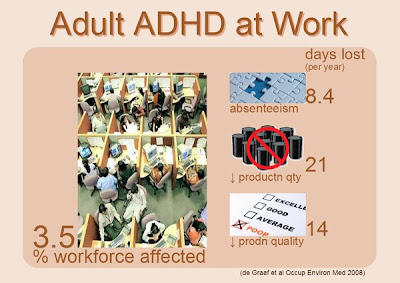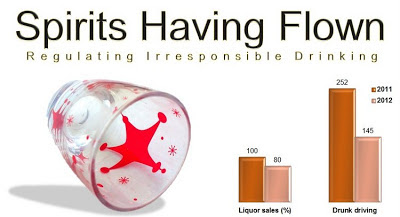
What is normal? A 22-year-old man jumped into the tiger's enclosure at the local zoo on Saturday and was mauled on his back, stomach and thighs. The previous night he had dreamt that he was to free the big cat and that it wouldn't kill him. "See, it didn't kill me," he said. Doctors treating him said, "he has received injuries but he would be well soon ... he was not suicidal."
What is normal?
The concept of normality is at the core of mental health. Without a concept of what is normal one cannot identify the abnormal. In this post we explore the concept of normality from a mental health point of view.Normality as Health
The WHO has defined health as a complete state of physical, mental and social well-being and not merely the absence of disease or infirmity. Later they added spiritual well-being to the definition. So health is a positive state, not just the absence of disease. This concept looks at normality from a biological or medical point of view.Suicide attempts are an important marker for mental health illness. However, the mere absence of this particular marker does not rule out mental illness. But the young man’s actions do indicate a lack of judgement - would jumping into the enclosure free the tiger? and after freeing the tiger what next? A display of impaired judgement is often the first visible sign of a mental health problem.
Normality as an Ideal
Normality is a blend of all the elements of the mental apparatus leading to optimal functioning that seeks perfection. However, Sigmund Freud wrote that "A normal ego is like normality in general, an ideal fiction. Every normal person, in fact, is only normal on the average. His ego approximates to that of the psychotic in some part or other and to a greater or lesser extent; and the degree of its remoteness from one end of the series and of its proximity to the other will furnish us with a provisional measure of what we have ...". This psychological interpretation of what is normal was the first to conceive of normality and abnormality as different ends of the same spectrum.Abnormality
Normality is also defined by the persons internal experience or "personal world" - the way they think or feel. Karl Jaspers, psychiatrist and philosopher, viewed the goal of eliciting signs and symptoms from the patient as an attempt to reach an understanding of their personal experience without any prior assumptions or bias. According to Jaspers, the "personal world" is abnormal when it is based on a disease condition such as schizophrenia, when it alienates the person from others emotionally, or when it does not provide the person with a sense of “spiritual and material” security.Normality as Average
Normal is also a statistic. The field of psychology contributed further to the concept of normality and mental health by introducing objectivity through measurement. Take intelligence, for example. A graph plotting the distribution of individual intelligence scores (IQ) in the population would follow a bell-shaped curve. The middle range of this curve is considered as normal, and the extremes as significantly low or high intellectual ability. This normal as an average is in the context of the total group. When is it normal to jump into the tiger enclosure?Normality as Process
Normality is also conceived as being the result of an interacting system. This process-concept emphasises changes over time as against a cross-sectional definition of normality viewed at a particular point of time. The trajectory of development of an infant into an adult is one such process of normal change. When seen against this background an act such as crawling is normal in infancy but would need explanation in adulthood.Social Normality
Normality is also assessed from a social viewpoint. Is the person normal to others in the same society? Is the person viewed as abnormal by the person's society but normal by others from outside the person's society? Is the person normal in the person's society but abnormal when viewed by persons outside the society? The answers to these questions are directly impact whether the person will be labelled as mentally ill and associated with the stigma of mental illness. The answers are also medically important as they will impact the decision to seek healthcare.In a world where young people are exhorted to follow their dream one also needs to consider the dream.References
- Coelho MT. [Conceptions of normality and mental health among prisoners in a correctional institution in the city of Salvador].Cien Saude Colet. 2009 Mar-Apr;14(2):567-75.[Article in Portuguese]
- Freud, Sigmund. (1937c). Die endliche und die unendliche Analyse. GW, 16; Analysis terminable and interminable. SE, 23: 209-253.
- Kaplan & Sadock's Synopsis of Psychiatry: Behavioral Sciences/clinical ...By Benjamin J. Sadock, Harold I. Kaplan, Virginia A. Sadock. 9th Edition. Lippincott Williams and Wilkins. Philadelphia. 2003
- Jaspers, Karl (1997). General Psychopathology - Volumes 1 & 2. translated by J. Hoenig and Marian W. Hamilton. Baltimore and London: Johns Hopkins University Press
- Sabshin, Melvin. Psychiatric perspectives on normality. Archives of General Psychiatry 17.3 (1967): 258.
- World Health Organization. WHO definition of Health, Preamble to the Constitution of the World Health Organization as adopted by the International Health Conference, New York, 19–22 June 1946; signed on 22 July 1946 by the representatives of 61 States (Official Records of the World Health Organization, no. 2, p. 100) and entered into force on 7 April 1948. In Grad, Frank P. (2002). "The Preamble of the Constitution of the World Health Organization". Bulletin of the World Health Organization 80 (12): 982.



